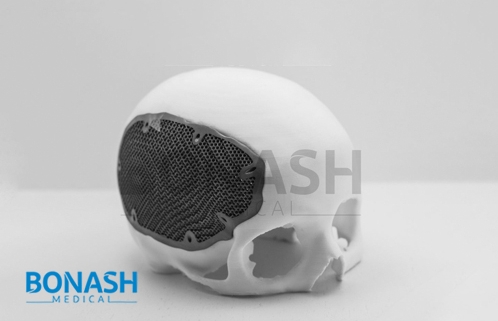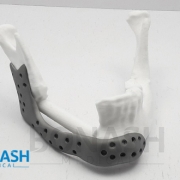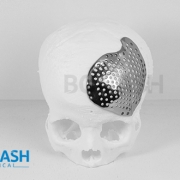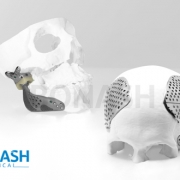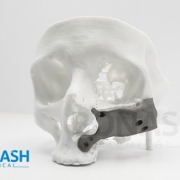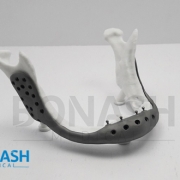Personalized titanium prosthesis
Craniofacial segmental defects that are caused due to blast injury or tumor ablation require reconstructive procedures involving large bone replacement implants. Such defects remain a challenging problem for reconstructive surgeons as it is difficult to create a complicated 3D structure that satisfies significant functional and aesthetic roles of the mid face.
These defects are patient specific and the implants should depend on the loads and the dimensions of the missing bone defect. Advances in 3Dprinting technology have opened a new dawn in personalized titanium prosthesis design. Recently, an additively manufactured custom made implant has been successfully created and implanted in an infant using a 3D printer.
Craniofacial segmental defects that are caused due to blast injury or tumor ablation require reconstructive procedures involving large bone replacement implants. Such defects remain a challenging problem for reconstructive surgeons as it is difficult to create a complicated 3D structure that satisfies significant functional and aesthetic roles of the mid face.
These defects are patient specific and the implants should depend on the loads and the dimensions of the missing bone defect. Advances in 3Dprinting technology
Have opened a new dawn in patient specific implant design. Recently, an additively manufactured custom made implant has been successfully created and implanted in an infant using a 3D printer.
Craniofacial segmental defects that are caused due to blast injury or tumor ablation require reconstructive procedures involving large bone replacement implants. Such defects remain a challenging problem for reconstructive surgeons as it is difficult to create a complicated 3D structure that satisfies significant functional and aesthetic roles of the mid face.
These defects are patient specific and the implants should depend on the loads and the dimensions of the missing bone defect. Advances in 3Dprinting technology
Have opened a new dawn in patient specific implant design. Recently, an additively manufactured custom made implant has been successfully created and implanted in an infant using a 3D printer.

